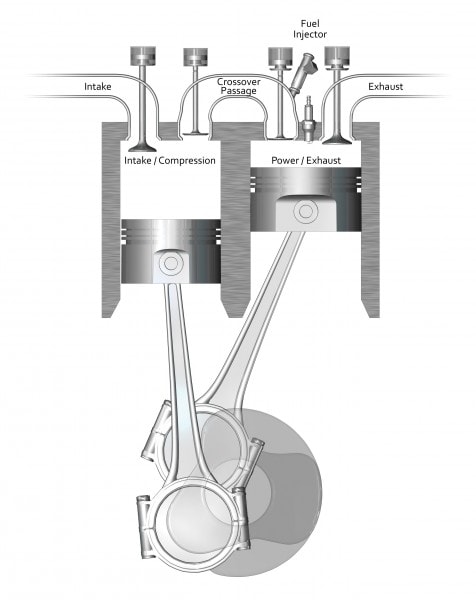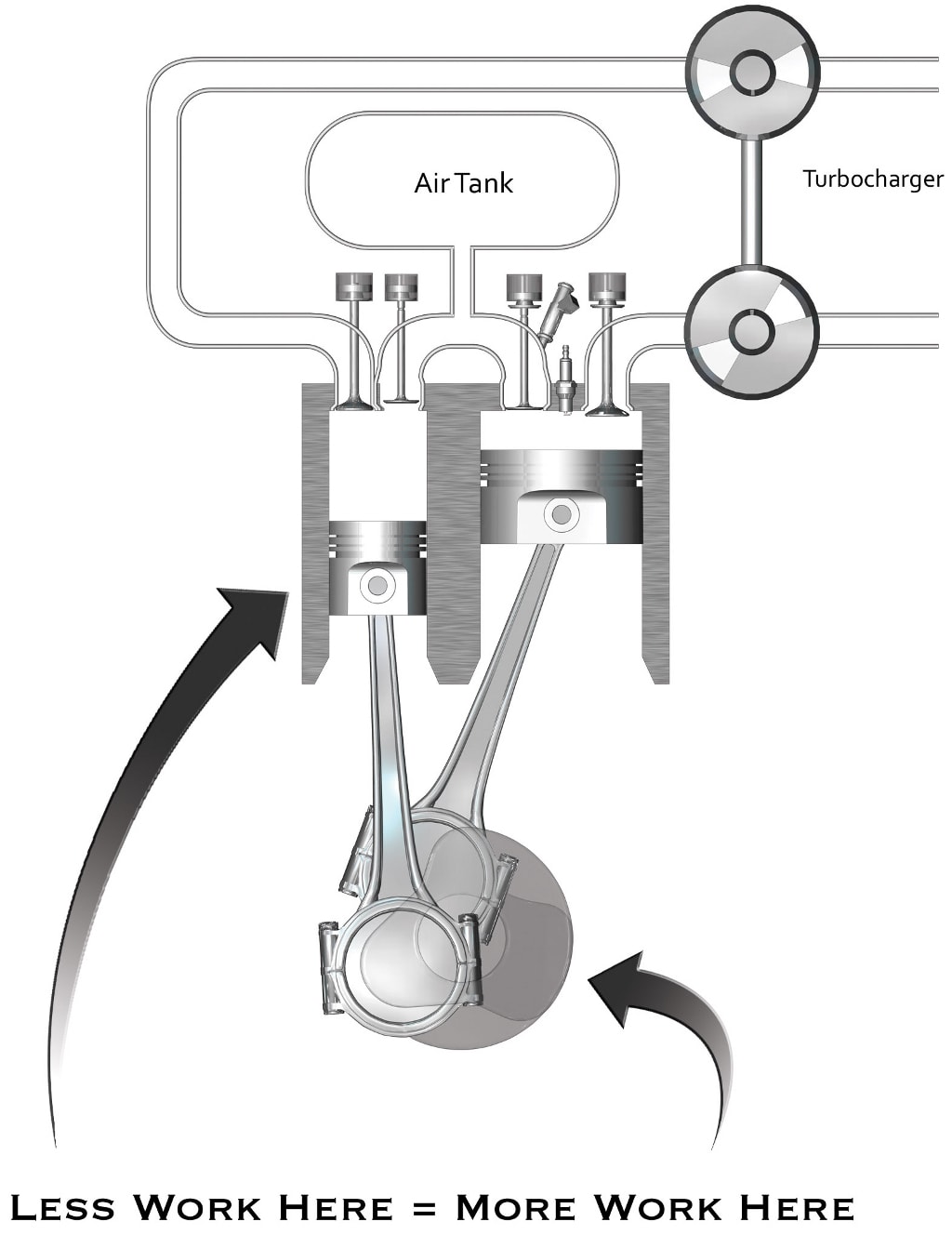For a couple of years now, the automotive industry has turned its attention, with an increased interest, towards a company which goes by the name of Scuderi. The group of engineers which make up the company have been working for a considerable amount of time on a project that, if, at one point, proved to be worth the investment, might change the way we look at an internal combustion engine.
Their creation is called, simply, Scuderi. It is, basically, an engine, but one that works a bit different than your regular ICE. It is an engine that splits the four main tasks of an ICE (suck, squeeze, bang and blow, as we call the four tasks of an engine, in auto-slang, of course) into two groups. Unlike a traditional engine, which uses each of the cylinders for intake, compression, power, and exhaust, Scuderi uses half of the cylinders for intake and compression and the other half for power and exhaust.
The details of the original Scuderi engine, how it works and why it, in theory, should be better than your regular ICE can be found by taking a look at the guide we ran on the subject back in January 2010.
Since then over a year has passed, months during which the Scuderi team wasted no time. During this year's Society of Automotive Engineers (SAE) World Congress, Scuderi presented a new version of the engine, a turbocharged version, one that is hoped to become a natural evolution of this yet-to-be mass-produced technology.
TURBOCHARGED
The Scuderi split engine, as the tech is officially called, was originally designed to be the starting point for several versions, including an air-hybrid, a turbocharged for gas-powered units, and a diesel version. The model presented at the SAE congress is said to be a touch better then the let's call it stock version because it “enables maximum levels of power and torque while reducing the rate of fuel consumption and engine size.”
More precisely, using a 3.2 bar turbocharger for the unit allowed Scuderi to decrease the brake specific fuel consumption (BSFC) by up to 14 percent compared to the regular Scuderi engine. At the same time, brake mean effective pressure (BMEP) has been increased by 140 percent.
As you already know, adding a turbocharger to just about everything is the new black in the industry, as this technology allows for downsizing, at no expense for power. In Scuderi's case, the size of the engine has been reduced as a consequence of adding a turbocharger by 29 percent.
For example, if you apply the Scuderi technology to a four-cylinder engine, the four pistons of the unit will be divided as follows: two used for high-pressure strokes (compression and power) and two for low-pressure strokes (intake and exhaust).
In this design, the turbocharger is used to convert recovered exhaust-gas energy into compressed air energy, allowing for the size of the compression cylinder to be diminished in order to achieve reductions in negative compression work.
The exact details that will transform talk into facts have not been released. Scuderi says the following weeks will bring those details into light as well, as the company is currently testing the engine in a 2011 Nissan Sentra. The initial, yet unconfirmed data pointed to the turbocharged version's capability of delivering some 135 hp/liter at 6,000 rpm.
For the record, the type of engine that has already been tested by the company, the original Scuderi, can operate at speeds of up to 6,000 rpm, while delivering about the same amount of horsepower as an engine with similar displacement and number of cylinders. Compared to a similar, but conventional engine, the Scuderi unit proves to deliver up to 80 percent less NOx levels.
Rather sooner than later, Scuderi will probably live up to its word and provide the data on the new design. Be sure we'll be here to bring you the latest updates.
More precisely, using a 3.2 bar turbocharger for the unit allowed Scuderi to decrease the brake specific fuel consumption (BSFC) by up to 14 percent compared to the regular Scuderi engine. At the same time, brake mean effective pressure (BMEP) has been increased by 140 percent.
As you already know, adding a turbocharger to just about everything is the new black in the industry, as this technology allows for downsizing, at no expense for power. In Scuderi's case, the size of the engine has been reduced as a consequence of adding a turbocharger by 29 percent.
For example, if you apply the Scuderi technology to a four-cylinder engine, the four pistons of the unit will be divided as follows: two used for high-pressure strokes (compression and power) and two for low-pressure strokes (intake and exhaust).
In this design, the turbocharger is used to convert recovered exhaust-gas energy into compressed air energy, allowing for the size of the compression cylinder to be diminished in order to achieve reductions in negative compression work.
The exact details that will transform talk into facts have not been released. Scuderi says the following weeks will bring those details into light as well, as the company is currently testing the engine in a 2011 Nissan Sentra. The initial, yet unconfirmed data pointed to the turbocharged version's capability of delivering some 135 hp/liter at 6,000 rpm.
For the record, the type of engine that has already been tested by the company, the original Scuderi, can operate at speeds of up to 6,000 rpm, while delivering about the same amount of horsepower as an engine with similar displacement and number of cylinders. Compared to a similar, but conventional engine, the Scuderi unit proves to deliver up to 80 percent less NOx levels.
Rather sooner than later, Scuderi will probably live up to its word and provide the data on the new design. Be sure we'll be here to bring you the latest updates.


